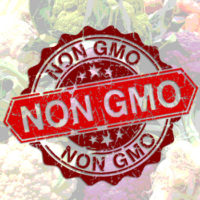Food for Thought: The Federal GMO Labeling Law

For several years, legislative bodies throughout the country have struggled with the issue of whether to label food products as containing genetically modified organisms (GMOs) or bioengineered food. Congress and various states have wrestled with whether to require foods containing GMOs to be labeled as such, and, if so, what the label should look like.
In July 2016, Congress voted to pass a GMO disclosure bill, establishing national standards for food labeling when foods contain GMO ingredients (with certain exceptions). On July 29, 2016, President Barack Obama signed the bill into law (GMO Labeling law). While proposed federal legislation in 2015 would have made GMO labeling only a voluntary program, the new GMO Labeling law—the result of bipartisan congressional compromise—makes GMO labeling mandatory. The law also preempts individual state GMO labeling laws.
Although the GMO Labeling law provides information about the different ways companies will be permitted to disclose GMO ingredients, it leaves the specific regulations implementing the law to the U.S. Department of Agriculture (USDA) to establish by July 2018. Therefore, some uncertainty about the details of the new law remains for food companies, industry groups and consumers. It also remains to be seen how, if at all, the new law and the buzz surrounding it will cause some companies to modify any prior decisions to label GMO-containing products. Additionally, will the law impact the U.S. Food and Drug Administration (FDA)’s highly anticipated definition of the term “natural” in food labeling? Significantly, will the new presidential administration affect implementation of the law, and if so, how? The GMO Labeling law begins a new chapter of the GMO labeling saga, but the tale is far from over.
What Does the New Law Say?
The secretary of agriculture, as head of USDA, is tasked with promulgating the specific GMO labeling regulations, including determining 1) which foods will be considered “bioengineered” and subject to the labeling requirements and 2) the specific ways a company can disclose GMOs on its labels. But the GMO Labeling law requires that disclosure be made on a food label through one of the following ways: text, a symbol or picture, a hotline consumers can call to receive GMO information or a bar code that links to a website displaying GMO information for the product.
Importantly, the GMO Labeling law expressly preempts any individual state GMO labeling laws. This prevents the chaos that might ensue from having a patchwork of different laws in different states. Now, instead of grappling with how to navigate individual states’ requirements, the food industry will look to USDA regulations that will apply nationwide.
However, the law does not provide any penalties for violations of its terms and states that USDA has no recall authority for any food not in compliance with the GMO labeling rules. This is consistent with FDA’s previous position concerning the safety of foods derived from GMOs. The imposition of penalties is left to the states.
Additionally, food manufactured by small companies (making less than $1 million per year from sales of food), food served in restaurants and food derived from animals that have consumed GMO feed are exempt from the law.
Is the GMO Labeling Law a Good Thing or a Bad Thing?
It depends on whom you ask. But the GMO Labeling law has received lots of attention from industry groups, consumer groups and other interested parties.
Safety of GMOs
In spite of—or perhaps because of—the prevalence of bioengineering in crop production, the safety and benefits of GMOs in foods are hotly debated. Proponents advocate that bioengineering reduces the use of pesticides, yields more nutritious foods in greater quantities and is a necessary tool in combating world hunger. Moreover, some wonder why modern genetic modification techniques should be viewed differently from traditional plant breeding methods. As stated by the popular astrophysicist Neil deGrasse Tyson: “Practically every food you buy in a store for consumption by humans is [a] genetically modified food…We have systematically genetically modified all the foods, the vegetables and animals that we have eaten ever since we cultivated them. It’s called artificial selection.” In fact, FDA has steadfastly maintained that for the purposes of food labeling, there is no material difference between crops grown from bioengineered seeds and crops grown using traditionally bred seeds. Consequently, FDA never required that foods containing GMOs be labeled as such.
Despite the growing consensus that genetically modified foods are safe, GMO critics point to purported uncertainty about the long-term health, environmental and ecological consequences of bioengineering. In addition, many GMO opponents have for years been seeking “labeling transparency” and the “right to know” what is in their foods. Even among the pro-GMO-labeling contingency, some concede that GMOs are not necessarily “bad” for consumers’ health and that the pro-labeling stance is not necessarily grounded in science.
The GMO Labeling law raises some concerns that mandatory disclosure requirements, in effect, convey to consumers that genetically engineered foods are necessarily unsafe and could bolster the public’s fear about the presence of GMOs in their foods. The thought is that mandatory GMO labeling improperly suggests to consumers that there is something dangerous about GMOs that requires disclosure—a suggestion that is unsupported by science. Nonetheless, the desire for transparency has been a major driver in leading to the GMO Labeling law.
Eradicating Individual State GMO Labeling Laws
The GMO Labeling law has garnered praise from certain industry groups for preempting individual state GMO labeling requirements. One such group is the Grocery Manufacturers Association, whose president and CEO said, “This legislation will open a new era for transparency in ingredient information for consumers, by requiring disclosure of genetically engineered ingredients for families in every state across the nation. Its consistent national standard is far better than a costly and confusing patchwork of different state labeling.” SNAC International, the trade association of the snack industry, expressed a similar sentiment: “After a long two years of working with legislators on the GMO issue, we finally have legislation that gives the industry and consumers clarity…Manufacturers avoided a patchwork of potentially contradictory state laws and consumers have product transparency.” The Oklahoma Farm Bureau, a nonpartisan organization of farm and ranch families, noted it does not support a mandatory label, but it still praised the law for preventing a patchwork of state-by-state laws and focused on the benefits of GMO foods: “For decades, genetically modified crops have helped farmers produce an abundance of high-quality and affordable food, while also decreasing agriculture’s impact on the environment. A consistent national labeling standard not only allows farmers to continue embracing GMO technology but also gives consumers access to information about their food.”
But other groups argue that the national law does too little to protect consumers—with an overly broad definition of “bioengineering” and too many labeling options beyond a clear GMO statement directly on the label—and would have preferred that each state be permitted to enact stricter labeling requirements. The Organic Trade Association (OTA), a membership-based business association for organic agriculture and products that has supported the law, is experiencing backlash from some members who would prefer a state-by-state framework; the Organic Consumers Association, a nonprofit public interest organization, wrote an open letter asking organic companies to cancel their OTA memberships. Additionally, the executive director at the Center for Food Safety stated: “The law also represents a major assault on the democratic decision making of several states and erases their laws with a vague multi-year bureaucratic process specifically designed to provide less transparency to consumers.”
Option for a QR Code
A specific concern about the GMO Labeling law is its option to include a QR (quick response) code on the product label, directing consumers to the company’s website when scanned on their smartphones. Opponents of the law argue that the electronic disclosure option will confuse consumers and make them jump through hoops to figure out what is in their food. Additionally, the Rev. Jesse Jackson wrote, in a letter urging President Obama to veto the bill, that this aspect of the GMO Labeling law would effectively discriminate against lower-income consumers without access to smartphones.
Notably, the GMO Labeling law does require that, within 1 year, USDA conduct a study to determine whether any technological issues would impact disclosure through electronic means. If the study reveals barriers to consumer access, USDA may allow for additional disclosure options.
What Happens Next?
USDA’s Next Step and the New Administration
Prior to the end of the Obama administration, USDA was attempting to obtain congressional funding for the study regarding the viability of electronic GMO disclosures and aiming to release notice of its proposed rulemaking and to seek public comment regarding the details of the regulations by the end of 2016. However, USDA did not meet these goals by the end of 2016, perhaps because of the pending change in presidential administrations. On January 5, 2017, the outgoing secretary of agriculture, Tom Vilsack, released an exit memorandum, calling the GMO Labeling law “a landmark law for disclosure,” and stating that USDA “has established a working group and GMO Disclosure Team to manage implementation of the law.” The memorandum further states that “USDA must ensure that the rulemaking process closely adheres to the authority provided in statute.”
Moving forward, it remains to be seen how, if at all, the Trump administration will affect implementation of the GMO Labeling law. On January 18, 2017, the president nominated former Georgia governor Sonny Perdue as secretary of agriculture. Perdue, like many of President Trump’s other cabinet picks, has been viewed generally as antiregulation. Moreover, President Trump has appointed Kansas senator Mike Pompeo as head of the Central Intelligence Agency. Notably, Senator Pompeo authored and sponsored the “Safe and Accurate Food Labeling Act of 2015,” which would have precluded states from requiring mandatory GMO labeling and established a federal system of voluntary GMO labeling.
Indeed, Trump himself answered “yes” on the campaign trail in 2015 when the Iowa Farm Bureau asked him if he supported the use of biotechnology in food and opposed efforts to require mandatory labeling just because a food contains GMOs. And he has expressed plans to review and repeal regulations he considers burdensome to business and least critical to health and safety. Companies and consumers will watch and wait to see how Trump and his appointees handle the GMO Labeling law.
Potential Effect on Companies’ Voluntary Labeling Commitments
Before President Obama signed the law, but in the midst of the legislative battle over GMO labeling, several food companies—including Whole Foods Market, General Mills and Danone—had announced their own plans to provide information to consumers regarding the presence of GMOs in food products. It remains to be seen what these, and other, companies that have announced various methods of voluntary GMO labeling will do as they await USDA’s labeling regulations and whether they will alter their labeling policies in response to the final regulations. In early July 2016, after the GMO Labeling law had passed through Congress, Whole Foods announced commitment to its on-package labeling plan, stating that “our position has always been to support mandatory labeling of GMO foods through clear, on-package language, not QR codes or 1-800 numbers.”
Will GMOs Be Part of an FDA Definition of “Natural?”
To date, FDA has not promulgated a formal rule explaining if or when any food may be labeled “natural.” However, FDA held a period for public comments on the use of the term “natural” in food labeling from November 2015 to May 2016, specifically on whether it should define the term “natural,” and if so, how the term should be defined. FDA also sought comments regarding how it should determine the appropriate use of “natural” in food labels; for example, whether it should consider manufacturing processes and whether the term should apply only to “unprocessed” foods. FDA stated that its decision to request comments was partly in response to three citizen petitions, one of which requested that FDA “issue a regulation authorizing statements such as ‘natural’ on foods that are or contain foods derived from biotechnology.” FDA also explained that private litigation surrounding the term “natural” has led some federal courts to seek administrative determinations from FDA on whether food products containing genetically engineered ingredients may be labeled as “natural.” It remains to be seen whether FDA will take action based on the more than 7,600 comments it received, and if so, whether any definition of “natural” will address GMO ingredients. In the meantime, several courts have put consumer lawsuits against food companies based on the term “natural” on hold, pending word from FDA. The increased attention to GMOs in recent years, especially surrounding the new GMO Labeling law, might encourage FDA to finally address whether GMO foods can be labeled as “natural.”
Stay Tuned
For now, food companies and consumers eagerly await USDA’s comment period and release of its implementing regulations, as well as FDA’s definition of “natural,” and will monitor whether any changes are made to the GMO Labeling law during the new presidential administration. While the new GMO Labeling law is unlikely to please everyone involved, food companies and consumers alike hope the law will bring clarity and closure to the complex GMO labeling issues sooner rather than later.
The author would like to thank Carla Rose Karp, Esq., for her assistance with this article. This article states opinions of its author and does not necessarily represent opinions of Goodwin Procter LLP or its clients.
Glenn S. Kerner, Esq., head of the Litigation Department in Goodwin’s New York office and chair of the firm’s Nanotechnology Practice, has extensive experience in product liability law, particularly with respect to complex mass torts and multi-district litigation. Mr. Kerner is experienced in matters involving medical devices and pharmaceuticals, food and dietary supplements, consumer products and chemical exposure. He is also chair of the food law special litigation group of the Defense Research Institute’s product liability committee.
Looking for a reprint of this article?
From high-res PDFs to custom plaques, order your copy today!





